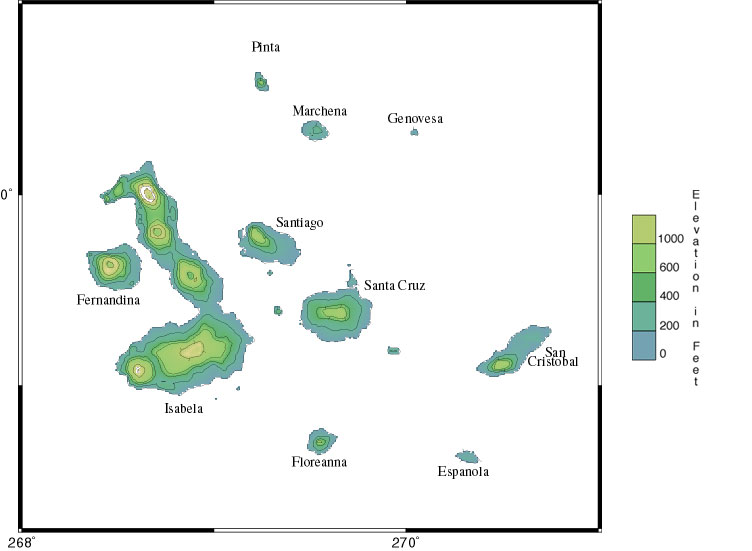|
Geomorpholgy Local Setting of the Galapagos Islands  | | Topographic data compiled by William Chadwick, Oregon State University. |
The Galapagos Islands, including all of it's nineteen islands and more than forty-two islets (surfacing rocks), have a total land surface of about 8000 square kilometers. Isabela is the largest island of the group, covering 4,588 square kilometers. Volcan Wolf is the highest point in the islands, standing 1707 meters and located on Isabela Island. All of the Galapagos Island's formed due to volcanic eruptions. Out of these islands there are 21 emergent volcanoes of which thirteen are considered active (White, et. al., 1993). These volcanoes do not form a linear chain, unlike the Hawaiian Islands. However, the oldest volcanoes tend to be located in the southeastern area of the archipelago.
The islands, stretching over a 174-mile (320-km) diameter, encompass 50,000 square kilometers of ocean surface. The islands are perched atop an oceanic plateau called the Galapagos Platform. The platform creates a relatively shallow water depth of 360 to 900 meters (between 200 to 500 fathoms).
|







